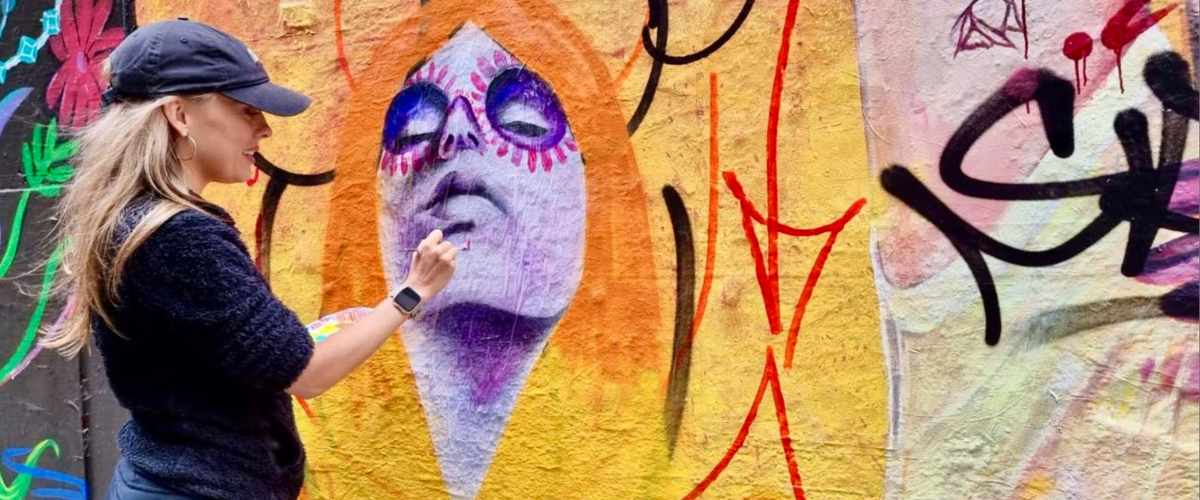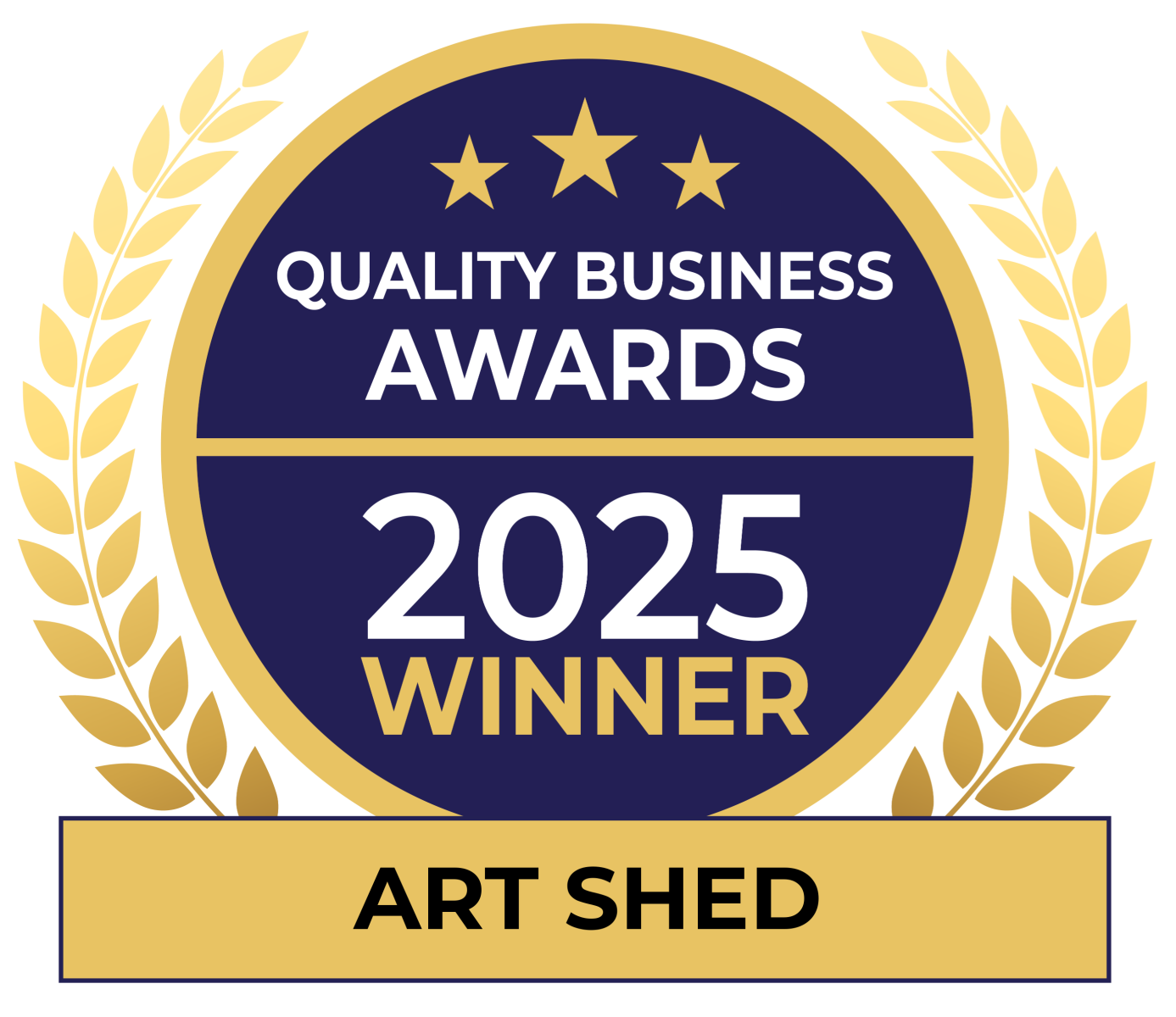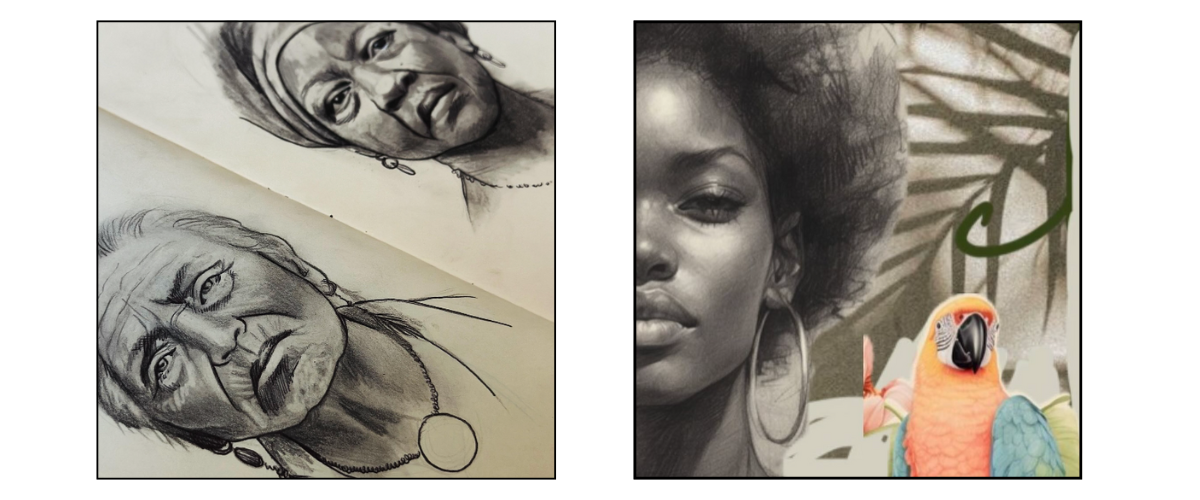Meet Vicki Soar: Artist, Art Therapist & Portrait Explorer
Author: The Art Shed Team Date Posted:2 June 2025
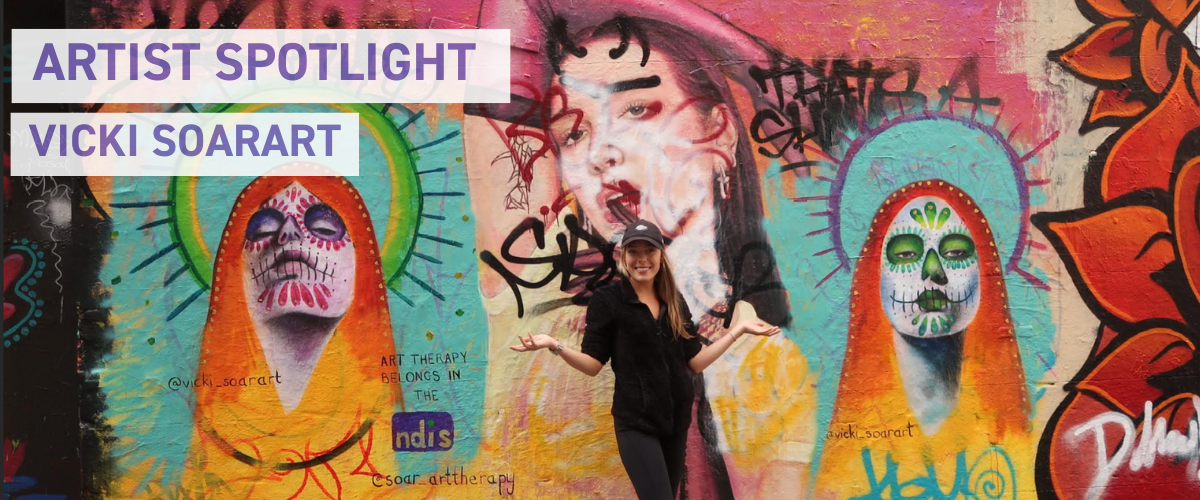
Meet Vicki, an artist and qualified art therapist whose work bridges emotional depth, psychological healing, and creative expression. With a background in fine art and therapy,
her portrait work resonates on a deeply human level. In this Artist Spotlight,
we chat with Vicki about how creativity and mental health intertwine, her process, and the project that's currently lighting her up.
Q&A with Vicki Soar
Tell us a bit about your journey as an artist – how did it all begin for you?
I was born into a creative family, I loved drawing and was lucky enough to be encouraged and supported to pursue this passion. I was always drawing, then in high school I discovered a love for portraits. I used to draw friends and bands, this lead to commissions and studying fine art and art therapy at university. Art has always been the thing I feel most at ease and present with.
You're also an art therapist – how does that background influence your creative work?
It influences it in so many ways - it has taught me to trust the process, how to sit with discomfort, and also given me a deeper respect for how transformative art is for healing. It has made me consider materials differently and changed the way I reflect on the process. When I feel stuck or overwhelmed, I often draw to find clarity— that approach is very much shaped by my training.
We’d love to know more about your creative process. Do you follow a routine or is it more intuitive?
It’s definitely become more intentional over time. Recently, I’ve set myself a challenge to do something creative every day—whether it’s a sketch, researching artists, or building Pinterest collages. When I sit down to draw, it’s intuitive. I often do a kind of “portrait brain dump”—drawing portraits with symbolic elements and writing my thoughts —which tends to spark a flow of new ideas.
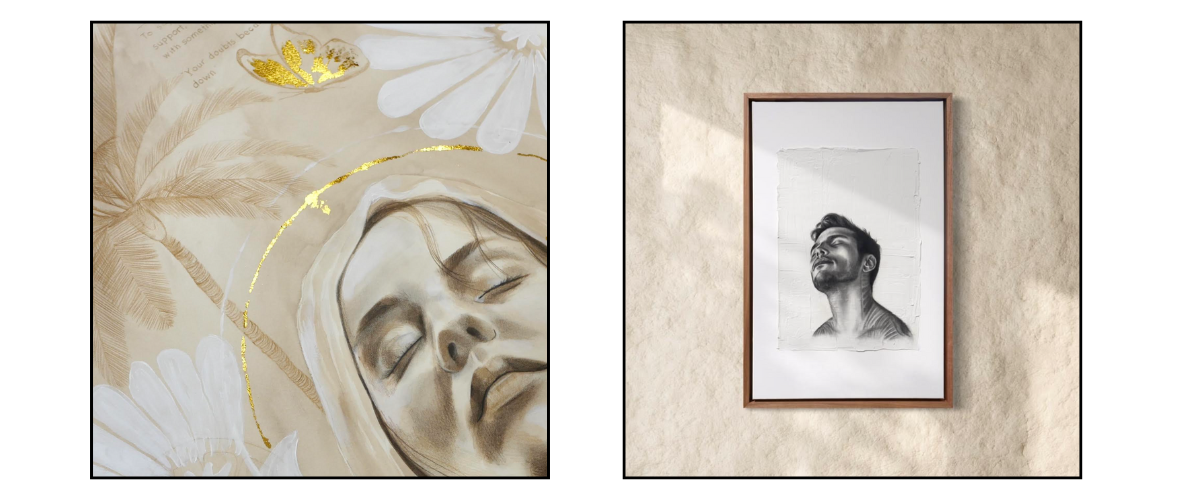
What’s lighting a fire in your belly creatively at the moment? Any themes, feelings, or ideas that keep showing up in your work?
I’ve been making an art therapy pack to support people suffering with anxiety – there was a gap in the market and I wanted to change the narrative that art therapy is just a relaxing, activity. The pack is an evidence based, psychoeducation resource using elements of acceptance commitment therapy. It creatively helps people to learn new ways to sit with uncomfortable feelings, learn what is working for them and explore what values are important to them for a meaningful life. I’ve been testing the interventions. I am really excited about how it could support people in need.
Tell us about a piece you've made that holds special meaning for you – and why.
There’s a portrait I created for my solo show in Daylesford that is really special to me – “Peace”. I had such a clear intention to capture the moment someone feels seen— by art, by themselves, by something greater. I think I was also processing the experience of being an art therapist and I felt like something was changing in me. This portrait was made at a very special time in my life, where I was having big breakthroughs on challenges. There was a phrase at the time I was reading consistently, which is also hidden in his tattoo.
What do you wish more people understood about the relationship between creativity and mental health?
That creativity isn’t just about making art, it’s a way of problem-solving, expressing, and restoring ourselves. When we feel stuck, creativity offers new perspectives and pathways to healing – both metaphorically and from neuroscience perspective. When we are creative our brains make new neural pathways and this can lead to incredible breakthroughs, especially in the context of supporting mental health. There’s so much research on neuroscience, creativity and mental health. Art therapy is a highly effective treatment for complex mental health issues, especially when a person is treatment resistant to talk therapy. It helps access emotions and memories stored in subcortical non-verbal parts of the brain, offering alternative ways to process and express difficult experiences.
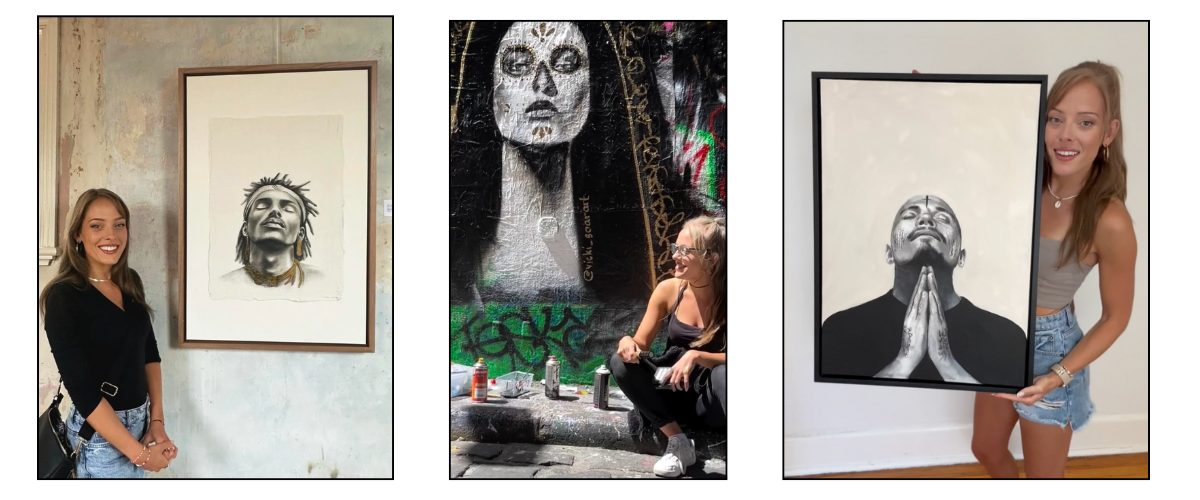
Do you have a favourite art material or tool you can’t live without?
A standard HB pencil - it’s the beginning of almost all my artwork. I love the versatility of it too. You can do controlled lines, words, symbols or soft blends – it’s a simple material but has the potential to create incredible artworks.
How do you overcome creative blocks or days when the inspiration just isn’t there?
I will hop on Pinterest, meditate, listen to music – or just start sketching. Sometimes I will give myself a deadline to make something or I’ll chat with one of my art friends. I love using the collage feature on Pinterest and that’s been amazing for sparking inspiration.
If your artwork could talk, what would they say about you?
I honestly think they would be quiet and observing, in a kind of peaceful way. I feel like in my life there’s a lot of talking, so when I sit down and make art those sounds tune out. Although some of my most recent sketches use the words I am thinking while drawing, these artworks are kind of a stream of consciousness. They would probably say I have a passion to overcome challenges using art.
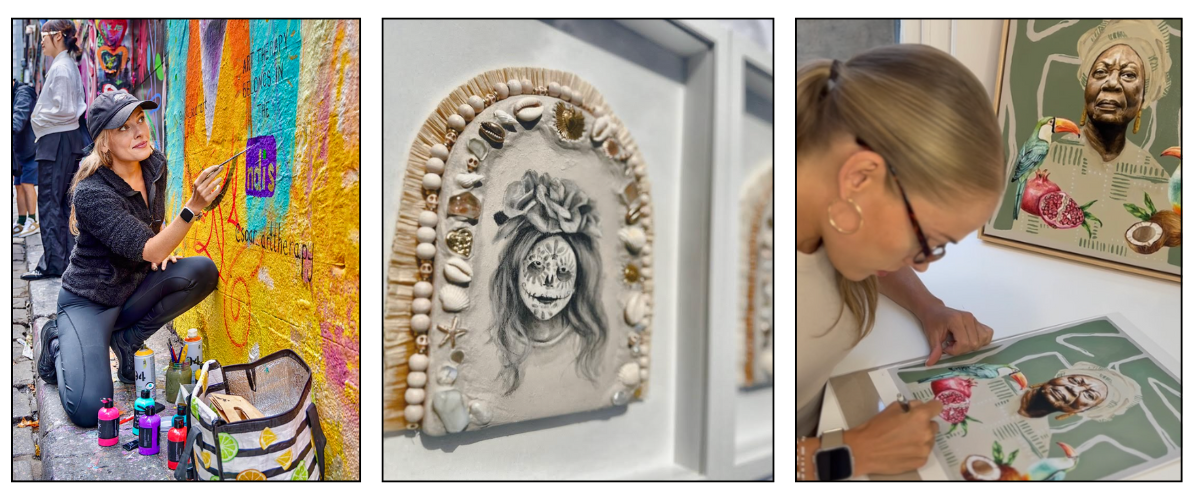
If you could create a dream project with unlimited resources, what would it be?
I’d love to open a gallery-meets-art therapy studio showcasing portraits from my acceptance commitment therapy (ACT) based art project. Each piece would weave in symbolic, value-driven elements, using mixed media and lots of different colours and materials. It would be amazing at promoting the healing power of art while creating meaningful artworks that enrich people’s lives. The space could also host exhibitions from others exploring the pack, and even include a framing studio for the beautiful Tasmanian oak frames my partner makes.
What’s one creative ritual or quirky habit you have in your art-making process?
Sometimes I will listen to the same song on repeat for an entire artwork. This could be on for hours but I find it just helps me get in the zone.
And just for fun – if you were an art supply, what would you be and why?
Probably a pencil—it’s my go-to and where I feel most confident. I also have a beautiful set gifted by a special friend, and they’ve been a part of some really meaningful commissions and experiences.
Why Vicki’s Story Matters
Vicki’s journey shows how creativity isn’t just about making something pretty it can be a lifeline.
Whether it’s supporting people with anxiety or offering space for emotional clarity, Vicki proves that art has serious power in the healing process.
Her story resonates with anyone looking to understand the connection between art and mental health.
Inspired by Vicki? Try This at Home
Start a "portrait brain dump" in your visual diary
Set a 10-minute creative timer: sketch, write, or collage without judgement
Use symbolic elements in your art to explore emotions
Start Your Portrait Practice with These Artist-Approved Essentials
FAQs
Q: What does an art therapist do?
A: An art therapist uses creative techniques like drawing and painting to support mental health and emotional expression.
Q: Can art help with anxiety?
A: Yes! Creative processes can reduce stress and help individuals explore their emotions in a healthy, restorative way.
Q: What tools do portrait artists use?
A: Many artists start with basic materials like HB pencils, which offer both control and expressive range.
Stay tuned for more Artist Spotlights as we continue to explore the minds and methods behind the creative community that inspires us every day.
Follow Vicki on Instagram for a closer look at her portraits, mural work, and creative process:
